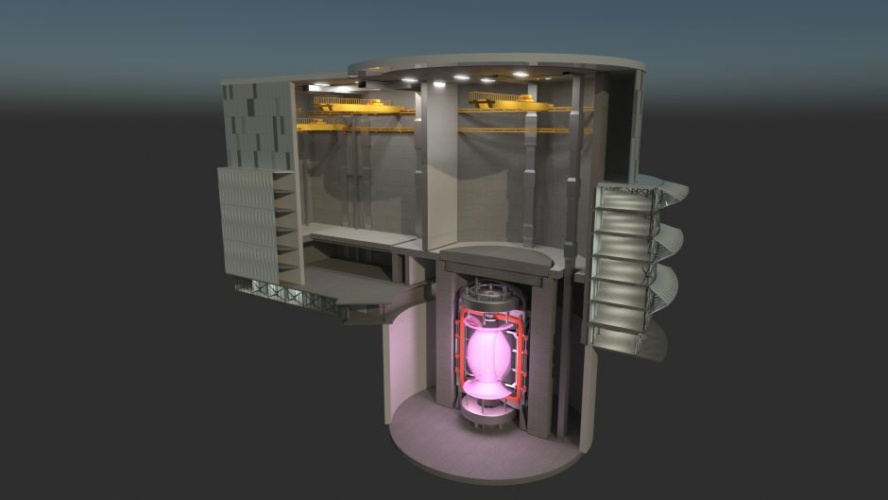A roadmap for developing robust and viable materials for fusion energy has been published by the UK Atomic Energy Authority (UKAEA) and The Henry Royce Institute for advanced materials.

Developed with the input of materials experts from the UK research community and industry, the roadmap highlights five major areas of work required to enable the materials for future fusion power plants.
Recent advances in fusion technology mean that prototype fusion power stations are now being designed, notably the UK’s STEP plant which is due to go online in the early 2040s.
According to the UKAEA, the leading contender for fusion power plants is the ‘tokamak’ – a ring-shaped machine in which fuel is confined with powerful magnets and heated until particles fuse together. The fusion process produces high-energy neutrons that can be turned into electricity, but which could also significantly damage and irradiate materials within the device.
First plasma for Mega Amp Spherical Tokamak Upgrade
Fusion power: breeder blankets and diverter technologies put to the test
Tests on Super-X divertor increase viability of nuclear fusion
Identifying, developing and qualifying the right materials is key to delivering commercial fusion because plant components and fuel breeder materials will need to withstand a highly challenging combination of neutron bombardment and thermal, magnetic, electric and mechanical loads in a tokamak power plant.
In a statement, Dr Amanda Quadling, director of materials at UKAEA said: “This roadmap is a national tool that aims to give UK materials researchers common themes to collaborate around. We hope to generate momentum in the testing, mechanistic understanding, and surmounting of, irradiation damage from fusion. The roadmap is also a teaching document for those who wish to learn more about fusion materials from a supply chain and regulatory point of view.”
The five priority areas identified by the UK Fusion Materials Roadmap are:
- Novel materials to minimise the amount of activation in the structure of the fusion power plant;
- Compounds that can be used within the power plant to optimise breeding of tritium fuel to sustain the fusion process;
- Magnets and insulators that are resistant to irradiation from fusion reactions – especially under cryogenic conditions;
- Structural materials able to retain their strength under neutron bombardment at high operating temperatures (over 550 degrees C);
- Engineering assurance for fusion materials – providing irradiated sample data and modelled predictions such that plant designers, operators and regulators have confidence that materials are suitable for use in future commercial power stations.
Professor David Knowles, CEO, Henry Royce Institute, said: “The technological challenges of delivering fusion energy into practical application demand the development of materials which can withstand the extremely severe operational conditions of fusion power plants. We now need to pursue, as a matter of urgency, the development of novel materials which engineers can use to reliably withstand fusion plants demanding environments such high temperatures, severe irradiation, rapid thermal cycling gradients.
“This important materials roadmap published by Royce and UKAEA sets out what we need to do to ensure we can deliver on one of the most challenging technological missions we have ever faced; the controlled exploitation of fusion using a tokamak technology has the potential to deliver low-carbon fuel abundance to the benefit for millennia to come.”
The post Roadmap highlights materials route to fusion appeared first on The Engineer.


